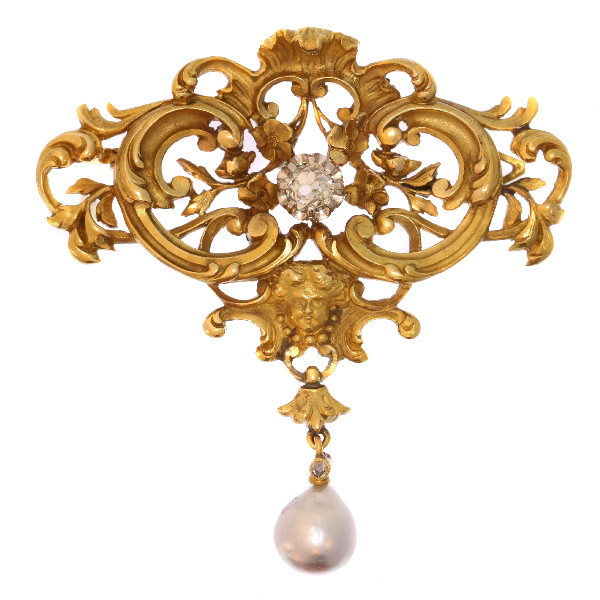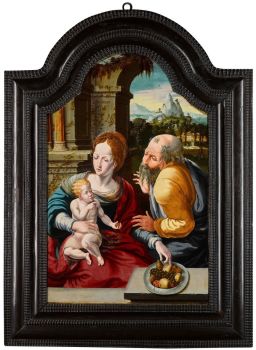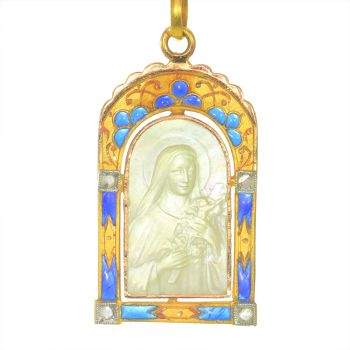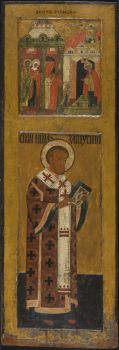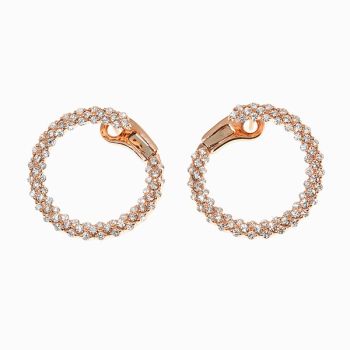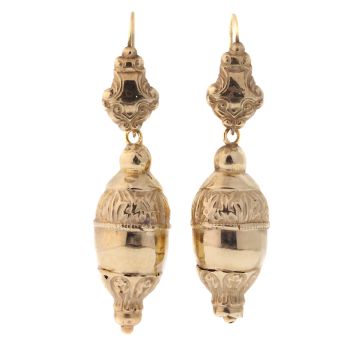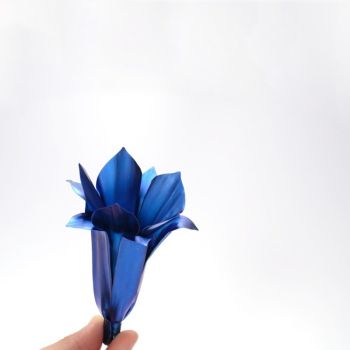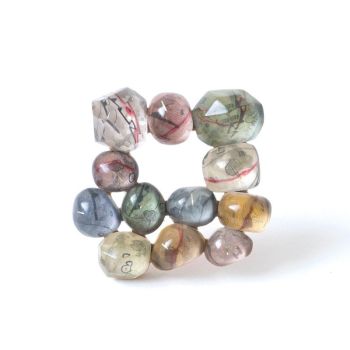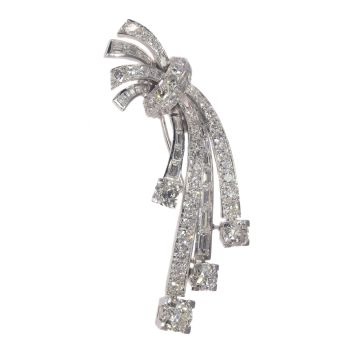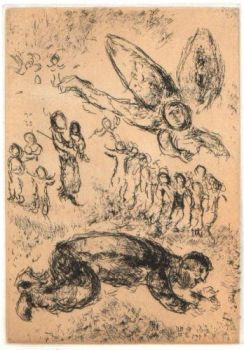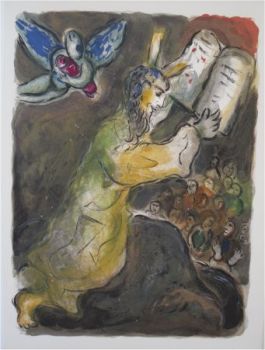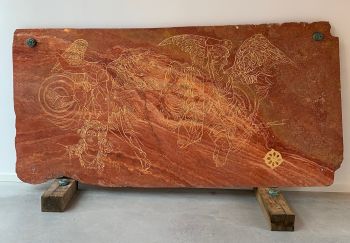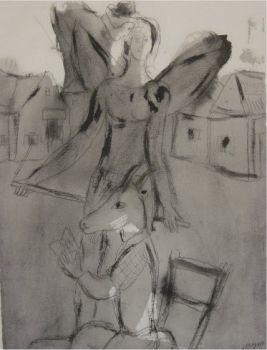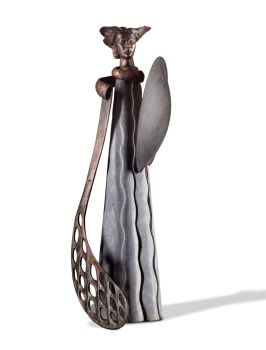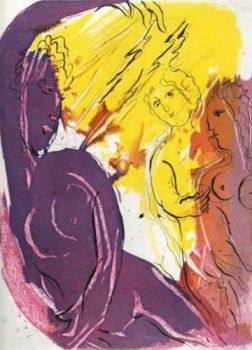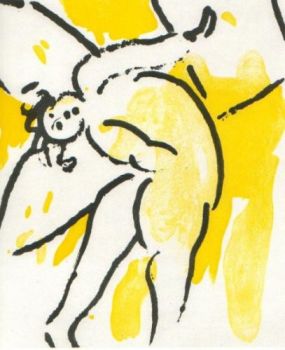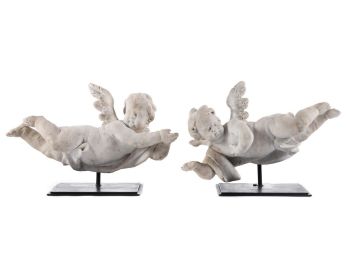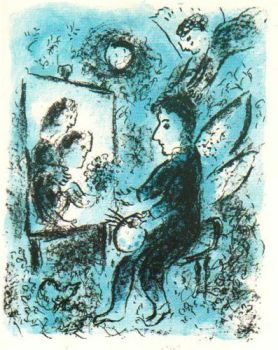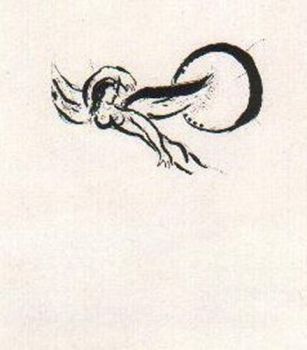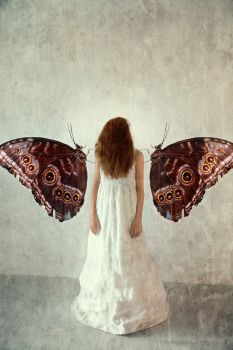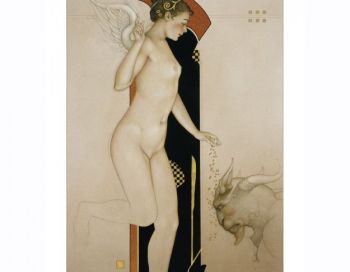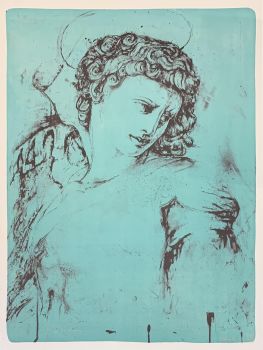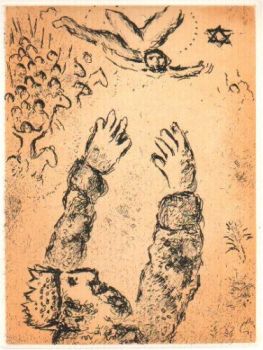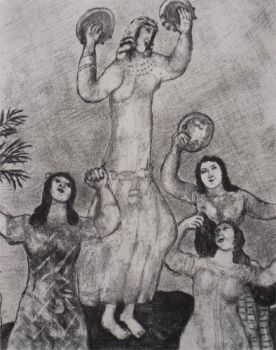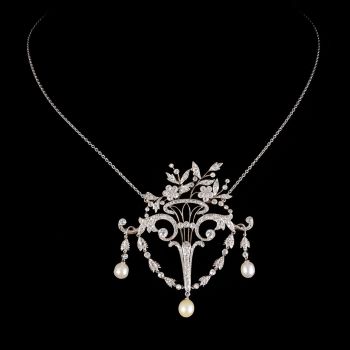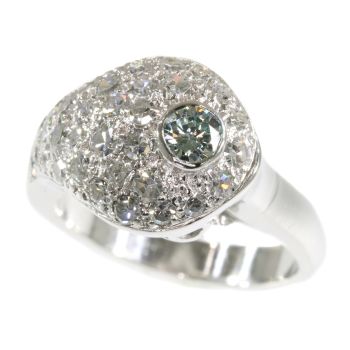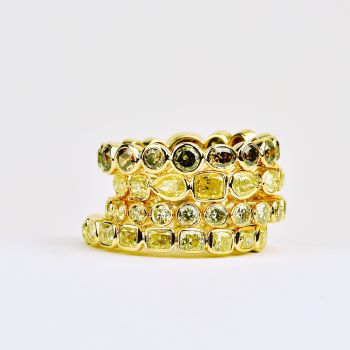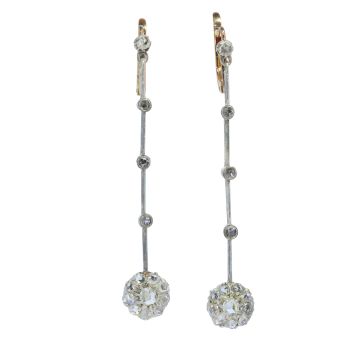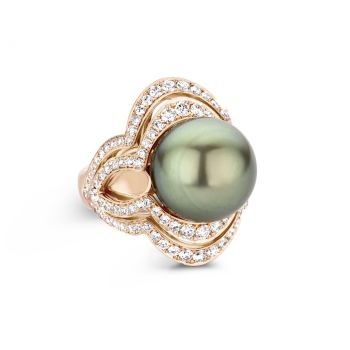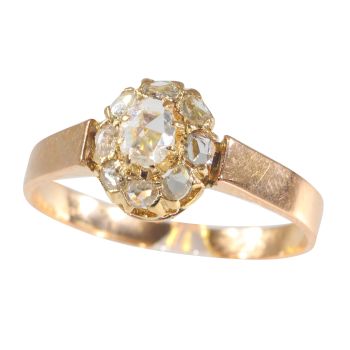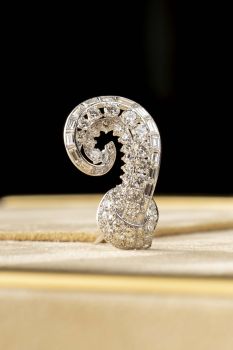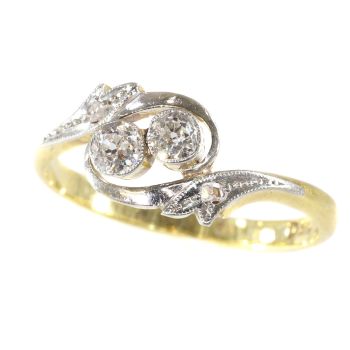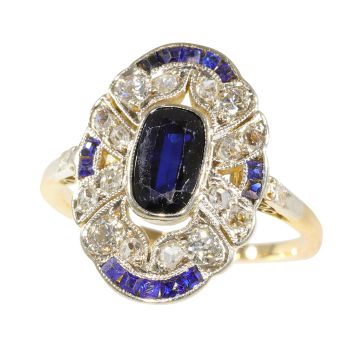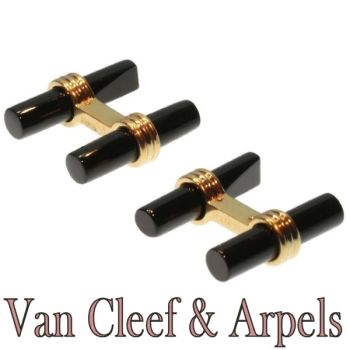Aesthetic Victorian gold brooch pendant with angels head and diamond 1890
Unknown artist
Adin Fine Antique Jewellery
- About the artworkLet this 18K yellow gold French Victorian brooch flood your senses with its harmonious neo-Rococo openwork interplay of rocailles and flowers.As two blossoming branches sprout from the top shell, a wave of curly C-shapes and swirly S-shapes ripples into a refined background flower frame arrangement.
In the meantime on the bottom of the brooch, an angel's head serves as the pillar for the tips of two C-elements across the draping leafs as they lift an old European diamond up to the piece its center.And lastly, the estuary of this abundant cascade of elegance narrows from the angel's collar into a dangling drop shaped saltwater pearl.
How can one not adore this eclecticism of the late Victorian period as it unites the land with the sea and the heavens - flowers with shells and angels - Belle Époque with neo-Rococo and neo-Classicism.
Antique jewelry object group: brooch/pendant
Condition: excellent condition
- (more info on our condition scale)
Country of origin: France
Style: Late-Victorian - Victorian decorative arts refers to the style of decorative arts during the Victorian era. The Victorian era is known for its eclectic revival and interpretation of historic styles and the introduction of cross-cultural influences from the middle east and Asia in furniture, fittings, and Interior decoration.
Victorian design is widely viewed as having indulged in a regrettable excess of ornament. The Arts and Crafts movement, the aesthetic movement, Anglo-Japanese style, and Art Nouveau style have their beginnings in the late Victorian era.
- See also: late-Victorianor more info on styles
Style specifics: The Late or Aesthetic Victorian Period - Experts divide the reign of Queen Victoria, also called The Victorian era (1837-1901) into three periods of about twenty years each; The Romantic Victorian Period (1837 - 1860), The Grand Victorian Period(1860 - 1880), and the Late or Aesthetic Victorian Period (1880 - 1901).
We consider this to be of The Late or Aesthetic Victorian Period.
Jewelry of this period is changing back from heavy to more smaller, romantic pieces with often whimsical motifs. Jewelers using diamonds and bright gemstones in elaborated and fine feminine pieces.
Period: ca. 1890
- (events & facts of this era, poetry of this era, fashion of this era)
Source of inspiration: Mother Nature
Material: 18K yellow gold
- (more info on precious metals)
Diamond(s): One old European cut diamond with an estimated weight of ± 0.40ct. (colour and clarity: M, vs/si).
One senaille. A senaille is a simplified rose cut diamond, a small diamond chip with perhaps a few polished facets. We do not have the weight of this diamond which is normal in our trade when it comes to senailles.
- All diamond weights, color grades and clarity are approximate since stones are not removed from their mounts to preserve the integrity of the setting.
Precious stones: Onesaltwater pearl
Birthstones: Diamond is the birthstone (or month stone) for April and pearl for June.
- (more info on birthstones)
Hallmarks: The French control mark for 18K gold representing an eagle's head that was in use in France from about 1838.
- (more info on hallmarks)
Dimensions: 4,55 cm (1,79 inch) x 4,75 cm (1,87 inch)
Weight: 16,70 gram (10,74 dwt)
Reference Nº: 18110-0067
Copyright photography: Adin, fine antique jewelry
- About the artist
It might happen that an artist or maker is unknown.
Some works are not to be determined by whom it is made or it is made by (a group of) craftsmen. Examples are statues from the Ancient Time, furniture, mirroirs, or signatures that are not clear or readible but as well some works are not signed at all.
As well you can find the following description:
•“Attributed to ….” In their opinion probably a work by the artist, at least in part
•“Studio of ….” or “Workshop of” In their opinion a work executed in the studio or workshop of the artist, possibly under his supervision
•“Circle of ….” In their opinion a work of the period of the artist showing his influence, closely associated with the artist but not necessarily his pupil
•“Style of ….” or “Follower of ….” In their opinion a work executed in the artist’s style but not necessarily by a pupil; may be contemporary or nearly contemporary
•“Manner of ….” In their opinion a work in the style of the artist but of a later date
•“After ….” In their opinion a copy (of any date) of a work of the artist
•“Signed…”, “Dated….” or “Inscribed” In their opinion the work has been signed/dated/inscribed by the artist. The addition of a question mark indicates an element of doubt
•"With signature ….”, “With date ….”, “With inscription….” or “Bears signature/date/inscription” in their opinion the signature/ date/ inscription has been added by someone other than the artist
Are you interested in buying this artwork?
Artwork details
Related artworks
- 1 - 4 / 12
- 1 - 4 / 24
- 1 - 4 / 24
Unknown artist
Antique Russian wooden icon: Archangel Gabrielearly 17th
Price on requestKunsthandel H.W.C. Dullaert Icons
Unknown artist
A pair of angels Antwerp, 17th century, Carrara marble17th century
Price on requestFrederik Muller
1 - 4 / 24Fontana
Flower basket brooch-pendant1900 - 1905
Price on requestAns Hemke-Kuilboer Juwelier & Antiquair
1 - 4 / 24- 1 - 4 / 12

